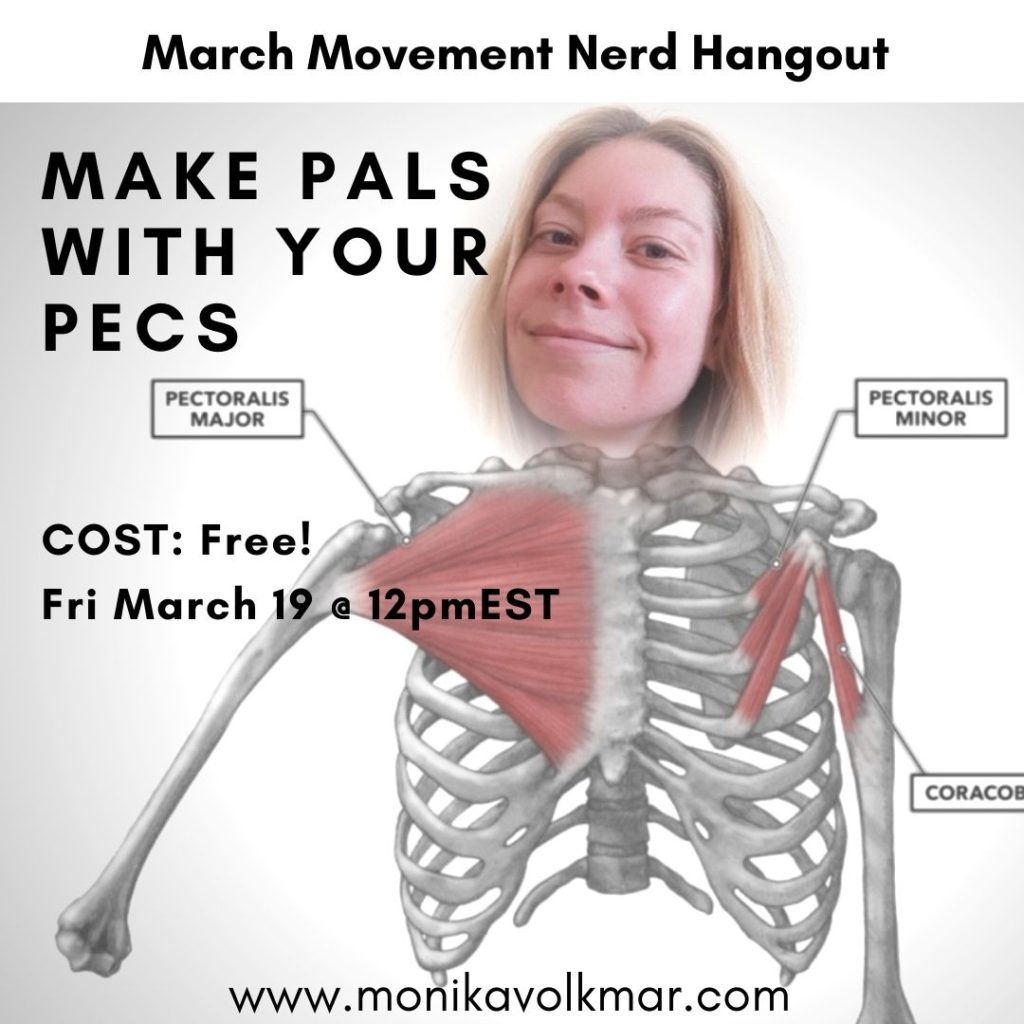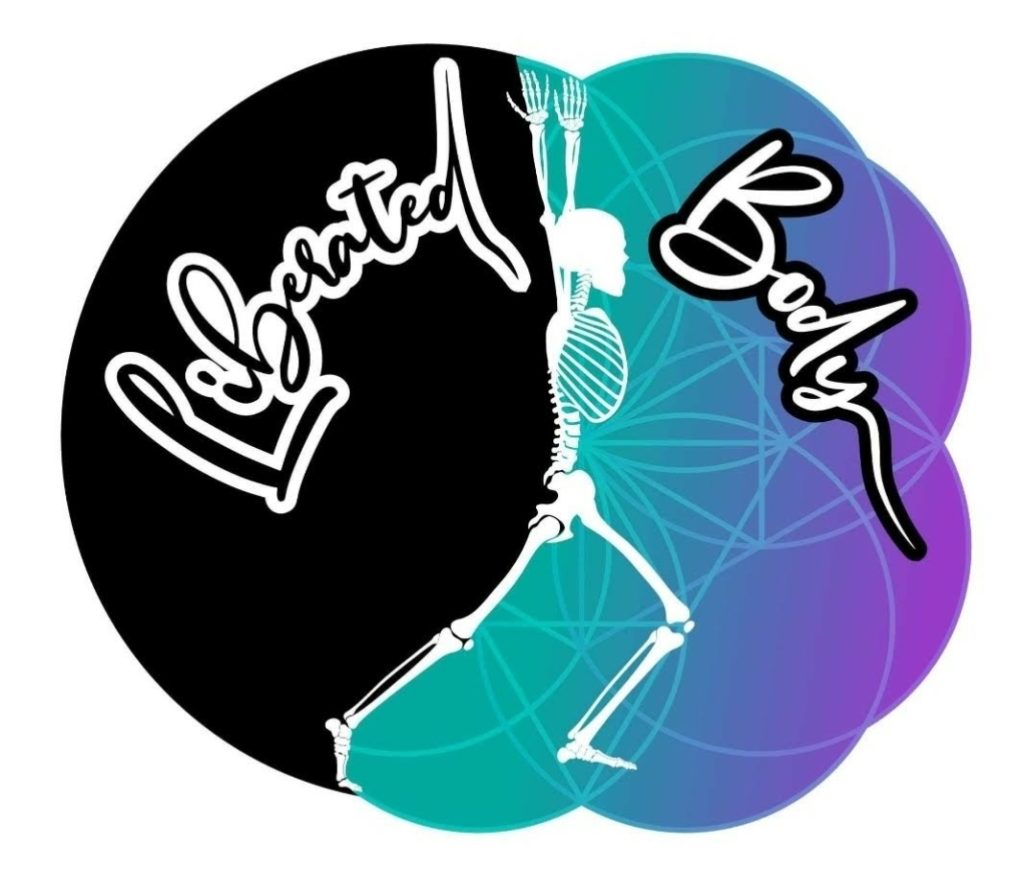Friday March 19th was the March edition of my monthly, free, Movement Nerd Hangout. Our topic: Make Pals With Your Pecs. (scroll to the bottom to watch the session recording).

Those pernicious pecs get blamed for causing a lot of trouble for our posture and shoulder health. In therapy world, most of the solutions involve stretching pecs, digging into the pecs with a ball, and other “myofacial release” strategies.
Back in the day, I used to do a ton of pec stretching and ball rolling and it didn’t change one single thing about how my body felt. Nothing changed until I began to pay attention to the actual motion of the bones and joints that the pecs connect to and manage:
- Clavicle (collar bone)
- Scapula (shoulder blade)
- Humerus (big ol’ arm bone)
- Ribcage (and by virtue of that, the spine)
As per Gary Ward’s second rule of movement, joints act, muscles react, we need to show those above bones how to move across their entire spectrum, in all three dimensions, if we want the muscles to do something.
We need real articulation between bones to generate an actual lengthening of muscles. And by virtue of Gary’s first rule, muscles lengthen before they contract, we need a muscle to first lengthen in order to generate it’s best contraction.
Bones moving= muscles get to do something.
Muscles getting to do something= happy body.
It is with this paradigm- what I’ve learned from studying Anatomy in Motion, that I set out to guide a movement-based query into your ability to access three dimensional lengthening and shortening of the pectoral muscles, via actual motion of the structures of your shoulder girdle.
Since I began working with my body in this way, I haven’t done a traditional pec stretch. They usually make my hands go numb… Instead, I simply make sure all my joints can do what their articulating surfaces are set up for, and the muscles seem to take care of themselves.
Anyway, here’s the replay of the full session. Follow along and let me know how it goes 🙂
If you enjoy this style of movement session, you may also like to participate in my online workshop Liberated Body. Its a study of how the human body moves in gait, through 4 exploratory movement sessions, based on the teachings of Anatomy in Motion. I run it live every so often, but you can start learning now by doing it as a home-study, at your own pace.


